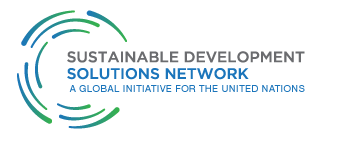Although several global decarbonization pathways exist, they are not based on national assessments and countries have not generally developed national pathways.
To address this challenge, the Sustainable Development Solutions Network (SDSN) launched the Deep Decarbonization Pathways Project (DDPP) to help countries identify “their own cost-effective transition path to a low-carbon future."
 23 January 2014: Countries need to develop long-term “deep decarbonization” pathways to limit global temperature rise to below 2°C and avoid a business-as-usual scenario, according to the Intergovernmental Panel on Climate Change (IPCC). Developing such pathways will require, inter alia, unprecedented technological diffusion and innovation, infrastructure building, financial mechanisms and regulation, and consumer behavior changes.
23 January 2014: Countries need to develop long-term “deep decarbonization” pathways to limit global temperature rise to below 2°C and avoid a business-as-usual scenario, according to the Intergovernmental Panel on Climate Change (IPCC). Developing such pathways will require, inter alia, unprecedented technological diffusion and innovation, infrastructure building, financial mechanisms and regulation, and consumer behavior changes.
Although several global decarbonization pathways exist, they are not based on national assessments and countries have not generally developed national pathways. To address this challenge, the Sustainable Development Solutions Network (SDSN) launched the Deep Decarbonization Pathways Project (DDPP) to help countries identify “their own cost-effective transition path to a low-carbon future,” according to SDSN Director Jeffrey Sachs.
The DDPP aims to: prepare national deep decarbonization pathways to 2050; support a positive outcome of the UNFCCC international climate negotiations by 2015; review aggregate global emission reduction pathways; build a global network to facilitate learning; and promote implementation of national decarbonization strategies in the post-2015 development agenda.
Sachs underscored that “the greatest sustainability challenge is to meet the energy needs of a growing world economy while moving to a safer pattern of energy use” and a “sharp cut in global carbon dioxide emissions.” He said limiting warming to below 2°C by halving global emissions is possible through two changes: a “massive rise” in energy efficiency; and lower carbon dioxide emissions per unit of energy. He emphasized it is possible to achieve energy efficiency gains in every major energy sector, including buildings, transport and industry. Sachs explained that energy used can emit less carbon dioxide per unit, through, inter alia: phasing out coal and replacing it with lower-carbon natural gas, nuclear, hydro, wind and solar energy; and widespread use of electric and hydrogen fuel cell automobiles. He recommended each part of the world develop a deep decarbonization road map.
SDSN launched the DDPP in fall 2013. SDSN-Korea hosted a technical workshop in Seoul, Republic of Korea, on 12-13 October 2013, during which participants agreed on project organization, deliverables and modeling principles. [DDPP Website] [Sachs Statement]